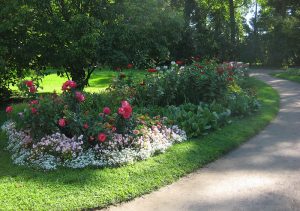 To build the ultimate visitor experience in your outdoor space, consider creating a sensory garden. Such an outdoor area offers numerous benefits. The garden is believed to be an ideal relaxation environment for people with autism and mental health issues. If you think that a sensory garden is a perfect addition to your home, below are a few tips worth remembering.
To build the ultimate visitor experience in your outdoor space, consider creating a sensory garden. Such an outdoor area offers numerous benefits. The garden is believed to be an ideal relaxation environment for people with autism and mental health issues. If you think that a sensory garden is a perfect addition to your home, below are a few tips worth remembering.
Location and Space
Regarding what size to go with for the sensory space in your garden, you can opt for any size. What matters most is the location. For this, you should take into consideration the people that frequent your yard. You should take into account if they have any mobility issues that will require you to install ramps or hazard-limiting features. See Treloar for more ideas on this.
For instance, raised beds and timber planters can help make your sensory garden more accessible. They are an excellent option for your guests that are in wheelchairs, allowing them to enjoy the beauty of the greenery.
Sight
Adding some flowers with vivid colours can help bring out the aesthetics of your outdoors. They add a visual touch, and this can be ideal for individuals with visual impairments. For this, you can decide to grow some hydrangeas because they produce some big colourful flowers. Sunflowers are also an excellent choice if you want a tall floral display along the edge of the pathways.
And if you are a health-nut, then why not grow some veggies. It can be an ornamental vegetable garden with something like Swiss Chard that has coloured leaves and stems.
Smell
As the name suggests, you are creating a sensory experience. Therefore, what better way to do this other than by using aromatic plants? Some of the top choices that will evoke a welcoming, joyous, and calming feeling include honeysuckle, chocolate cosmos, and lavender. The scents of these plants will be a big hit with the adults and children.
You can try mixing it up but go with mild hits. For instance, you can blend some lemon-scented geraniums with some spicier scents. You also can include any other option that will stimulate some curiosity in visitors when they step in the garden and take a whiff of the air around them.
Sound
When thinking of adding sound elements into your outdoor sensory space, pick those that are stimulating and relaxing.
For instance, you can install a water feature that will draw in some birds and other wildlife. You then will enjoy the soothing sounds of flowing water and be taken by the chirping of birds. Wind chimes and sound fences are other excellent alternatives worth considering. You can make a sound fence from recycled household items such as pipes, plastic bottles, and tubing.
Taste
The sense of taste might sound like an absurd thing to create in your sensory garden. But it is possible to include flowers or vegetables that have an aroma that excites people’s palettes.
Herbs such as thyme, rosemary, and mint are some of the safest choices. They can be an addition that spices up your garden’s edible section. Edible flowers like pot marigold and nasturtium are an excellent choice of plants whose beauty equates to their tastiness.
Touch
Lastly, include a touch-friendly section that can be the height of the sensory experience you want for your guests. Mexican Feather grasses are an ideal choice for an ornamental lawn and include plants such as lamb’s ear that have soft foliage.
Try to offer a mix of touch sensations so that you elicit wide reactions from those that visit your garden. Avoid any plants that have thorns or can make a person itch when touched.